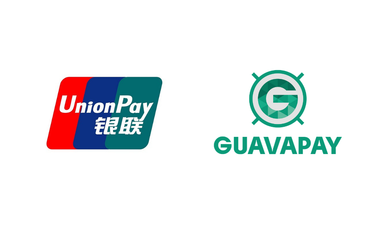Credit card industry rebound in 2021
Credit cards are remaining one of the staples of the payments industry. The pandemic emphasized a drastic evolvement of digital payment methods, but the card payment industry managed to maintain the leadership and has witnessed a rebound in the year of 2021 and 2022 to be the years of an increase in growth of the global credit card market.
The post-pandemic tendency toward digitalization changed the attitude of customers towards traditional payment methods. It has led to predictions of credit cards being replaced by alternative payment methods.
However, according to “Finder statistics” in January 2021, there were 62.8 million credit cards issued to UK residents.
Throughout the US states, the credit card industry is a major payment business. Credit cards compromised 23.6% according to the “Nilson” report, and the most interesting moment - despite the predictions about the downtime of credit cards in the time of the lockdowns and further recovery times demand credit has nearly doubled.
According to the report by TransUnion Q3 2021, Quarterly Credit Industry Insights Report (CIIR), Gen Z consumers are the main drivers of the credit card usage rebound. As the report states, between Q1 2020 and Q2 2021, new credit originations increased from 8.6 million to a record 19.3 million. While millennials still share the largest part of originations, the youngest generation is taking out credit at a rapidly growing rate.
Generation Z lead the rebound
As new generation representatives come into age at the start of using payment products, the first product they refer to is credit cards. During the different life stages, the need for credits opens the way for generation Z to refer to credits for different reasons - education credit, card credit, home loans and etc.
The tech-savvy young generation stimulates the growth of the use of credit card-related technologies, such as POS and e-wallets, expanding the use of credit cards across all sectors.
As stated by Accenture, “the use of cash during pandemics rapidly declined by 50% providing the space for the rapid adoption of cutting-edge technologies.
Credit card innovations facing the competition. In the fast-evolving credit card sector, new innovations wouldn’t leave traditional credit cards unchanged.
The adaptation of credit card to enhance customer expectations and bring in new inventions result in the evolvement of a variety of credit card types that responds to the demands of diverse customer layers.
Card variations
Different types of cards, including virtual cards, metal cards, co-branded cards introduce a whole new variation of cards to cardholders.
When a cardholder has the luxury of using different cards according to the situation, this allows the individual to feel power and agility.
The global Metal Credit Cards market is valued at 510 million US$ by the end of 2025, growing at a CAGR of 24.4% during 2019-2025.
Although the card types are different from each other in the terms of function, they are united by the attitude that the younger Generation attributes to them.
The demand for metal cards as well as virtual cards is the strongest among Gen Z, the segment that will dominate and predefines the direction of industry development.
An alternate method of payment is known as “contactless payments”.
The impact of COVID-19 highlights the necessity for contactless, seamless, and secure payments. Contactless payments rocketed during the pandemic, enabling users to avoid risks of touching surfaces and preventing the overall spread of the virus. An example, Mastercard witnessed a surge of 40% in contactless payments within the first quarter of the year.
Credit card rewards programs are the key point in customers acquiring. In 2021 credit card rewards prompted increased consumer card usage and elevated sign-up bonuses.
How rewards empower growth
Rewards stimulate consumers to use multiple cards, choosing the variety of rewards offered by each card.
Rewards and loyalty programs are one of the turning points in achieving an outstanding customer experience. For the previous year, given the effect of COVID consumers’ ability to earn rewards had been placed on hold. Therefore, customers couldn’t take advantage of their rewards, especially for travel cards ad hostility- based cards which negatively impacted customer loyalty.
This year rewards are deemed as a means to rebound not only credit cards themselves, but they are estimated to recover sectors most damaged by the pandemic, such as the travel and hotel industry. Card issuers make a stake on miles and travel rewards,
As a way out of this situation, most forward-looking credit card companies were obliged to show flexibility and navigate consumer expectations from their reward card into alternative reward spheres so that consumers can take advantage.
For example, most companies successfully compensate unused travel rewards by replacing them with rewards on everyday essentials such as groceries, take-outs, delivery, and gas. The flexibility of using, redeeming, and controlling the rewards is one of the main reasons why cardholders choose credit card companies.
 Sign in
Sign in



